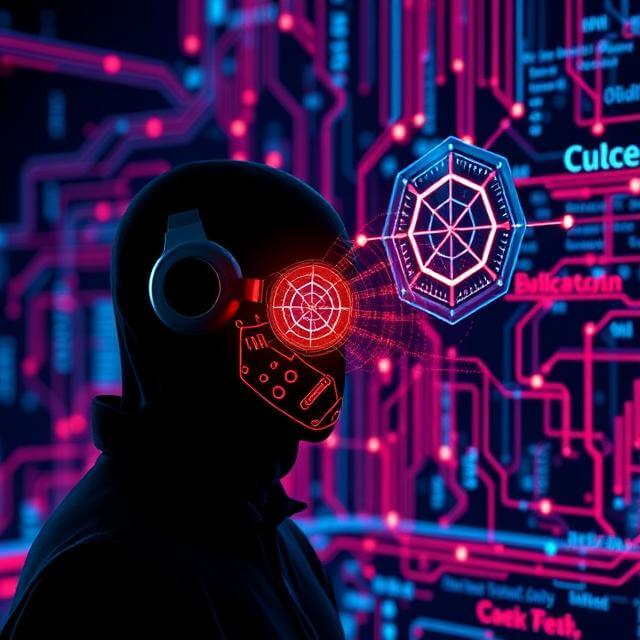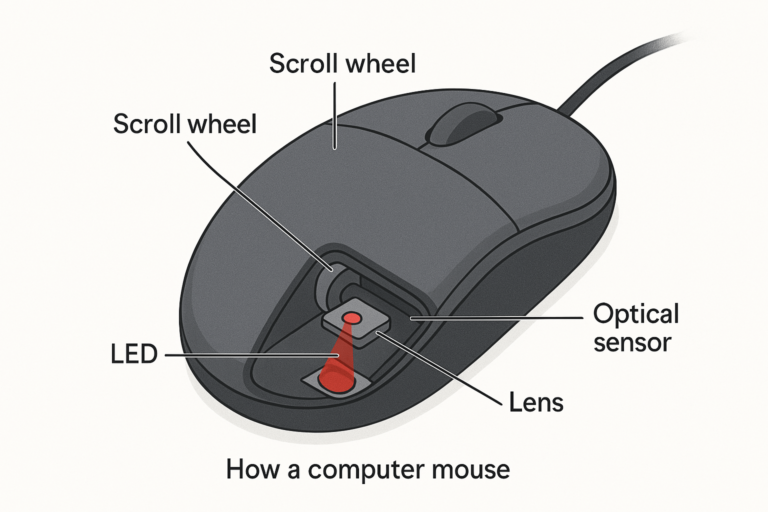AI in Cyber Threat Detection: How Artificial Intelligence is Transforming Cybersecurity
Published on Learn Sufficient Notes – sufficientnotes.com
Table of Contents
- Introduction
- What is Cyber Threat Detection?
- The Rise of Cybersecurity Challenges
- Role of AI in Cybersecurity
- Key Technologies Behind AI in Threat Detection
- How AI Detects Cyber Threats
- Real-World Applications of AI in Cybersecurity
- Benefits of Using AI for Cyber Threat Detection
- Challenges of AI in Cybersecurity
- Future of AI in Cyber Threat Detection
- How to Start a Career in AI-Powered Cybersecurity
- Conclusion
- FAQs
1. Introduction
In today’s digital-first world, cyberattacks are more frequent, advanced, and damaging than ever before. Traditional methods of threat detection are struggling to keep up. This is where Artificial Intelligence (AI) steps in to change the game. In this article by Learn Sufficient Notes, we explore how AI in Cyber Threat Detection is revolutionizing cybersecurity practices across the globe.
2. What is Cyber Threat Detection ?
Cyber threat detection refers to the process of identifying, monitoring, and mitigating malicious activities or security breaches within digital environments. It includes identifying viruses, malware, ransomware, phishing, DDoS attacks, and more.
There are two major types:
- Signature-Based Detection: Uses known threat patterns.
- Behavioral/Anomaly-Based Detection: Identifies unusual activity not matching regular patterns.
Traditional methods often fail with new, unknown threats. That’s why AI has become so important.
3. The Rise of Cybersecurity Challenges
The increasing digitization of personal, financial, and governmental data has made cybersecurity more important than ever. Here’s why:
- Zero-day attacks are on the rise.
- Cybercriminals use AI-powered attacks.
- IoT devices are vulnerable.
- Remote work environments increase entry points for attackers.
Cybersecurity Ventures predicts cybercrime will cost the world over $10.5 trillion annually by 2025.
4. Role of AI in Cybersecurity
AI helps in automating, predicting, and defending systems against evolving threats by:
- Analyzing massive datasets quickly
- Learning from past attacks (machine learning)
- Flagging unknown or zero-day vulnerabilities
- Detecting and responding in real-time
AI doesn’t just detect—it adapts, predicts, and protects.

5. Key Technologies Behind AI in Threat Detection
AI in cybersecurity works with various underlying technologies:
a) Machine Learning (ML)
Learns from historical data to identify future threats.
b) Natural Language Processing (NLP)
Analyzes language patterns in emails and web traffic to detect phishing and social engineering attacks.
c) Deep Learning
Simulates the human brain in decision-making for complex threat detection.
d) Neural Networks
Helps identify subtle patterns that traditional systems can’t.
e) Behavioral Analytics
Creates user profiles to track any unusual activity in real-time.
6. How AI Detects Cyber Threats
Let’s break down the workflow of how AI systems detect threats:
- Data Collection: From logs, devices, networks, cloud storage
- Data Preprocessing: Cleaning and organizing the data
- Feature Extraction: Highlighting the key aspects of the data
- Model Training: Using historical data to train AI
- Real-time Detection: Flagging anomalies instantly
- Automated Response: Quarantine, alert, or shut down
7. Real-World Applications of AI in Cybersecurity
AI is already making an impact in various sectors:
a) Financial Sector
Banks use AI to detect fraud in milliseconds.
b) Healthcare
AI protects sensitive patient data and prevents ransomware attacks.
c) Government Agencies
AI monitors critical infrastructure and national cybersecurity threats.
d) E-commerce
Prevents payment fraud, bot attacks, and customer data breaches.
e) Social Media
Detects fake profiles, hate speech, and misinformation campaigns.
8. Benefits of Using AI for Cyber Threat Detection
Here are the main advantages:
- Speed: AI can process thousands of data points in seconds
- Scalability: Protects systems at enterprise and national level
- Accuracy: Reduces false positives compared to manual detection
- Proactive Defense: Predicts future attacks, not just existing ones
- 24/7 Monitoring: Always-on protection without human fatigue
9. Challenges of AI in Cybersecurity
Despite its strengths, AI faces some limitations:
- High Initial Cost
- Bias in Training Data
- Complexity in Implementation
- AI vs. AI: Hackers are using AI too
- False Negatives: Some sophisticated attacks may still go unnoticed
10. Future of AI in Cyber Threat Detection
The future looks promising with:
- AI-Powered SOCs (Security Operations Centers)
- Autonomous Response Systems
- AI with Blockchain for immutable threat logging
- Quantum AI: Faster processing for real-time defense
According to Gartner, by 2030, over 90% of cybersecurity tools will be AI-enhanced.
11. How to Start a Career in AI-Powered Cybersecurity
Want to work in this field? Here’s your roadmap:
Skills to Learn:
- Python, R programming
- Machine Learning & Deep Learning
- Networking & Ethical Hacking
- Cybersecurity Protocols (e.g., SSL, TLS)
Certifications:
- CompTIA Security+
- Certified Ethical Hacker (CEH)
- Certified Information Systems Security Professional (CISSP)
- AI For Everyone (Coursera/Stanford)
Learning Resources:
- SufficientNotes.com Cybersecurity & AI guides
- Platforms: Coursera, Udemy, Cybrary, Google AI
12. Conclusion
AI is not just the future of cybersecurity—it is the present. From predicting zero-day attacks to providing real-time alerts, AI in cyber threat detection is creating a safer digital world. However, this also demands that we constantly adapt, update, and stay informed.
At Learn Sufficient Notes, we aim to make cutting-edge tech knowledge accessible and simplified for everyone. Stay updated, stay secure.
13. FAQs
Q1. Can AI detect all types of cyberattacks?
No system is perfect, but AI can detect a vast majority with high accuracy, especially new and unknown threats.
Q2. Is AI better than traditional antivirus software?
Yes, AI is more adaptive and can learn from new threats, unlike traditional tools that rely on predefined signatures.
Q3. Can AI be hacked?
Yes. Like any technology, AI can be attacked or misled if not properly secured.
Q4. Is learning AI and cybersecurity a good career path?
Absolutely. The demand for professionals in AI and cybersecurity is booming in 2025 and beyond.
Q5. How can I stay safe online using AI tools?
Use AI-based antivirus, enable firewalls, use multi-factor authentication, and stay updated with cybersecurity practices.
Article by: Learn Sufficient Notes
Website: https://sufficientnotes.com






